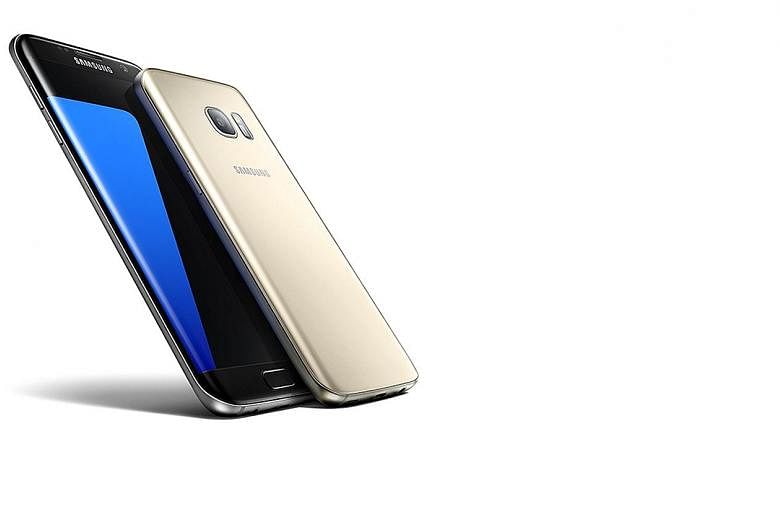Samsung's new Galaxy S7 handsets succeed the S6 and the S6 edge, perhaps one of the Korean company's biggest missteps with its flagship phones in recent memory.
A lack of features such as a removable battery, expandable storage and water resistance made the S6 range less practical than the previous-generation S5.
This was compounded by poor market forecasting that led to unfulfilled demand for the more premium S6 edge, and surplus stock of the S6.
All this led to sales that Forbes called "disastrous", with a 4.2 per cent drop in profit in the second quarter of last year, just after the S6 was released, versus the same period the year before.
Samsung hopes to turn this around with the Galaxy S7 and S7 edge, and it has started by reinstating some of the missing features.
Both phones now have a hybrid SIM card/microSD card tray, and boast an IP68 water- and dust-resistant rating, which means that they can be submerged in up to 1.5m of water for over 30 minutes.
While the battery is still non-removable, Samsung has ramped up the capacity from 2,550 mAh to 3,000 mAh, and 2,600 mAh to 3,600 mAh, for the S7 and S7 edge respectively.
These improvements are nice. Still, they feel overdue and incremental. It is almost like the S7 is everything that the S6 should have been, just one year too late.
Looks-wise, the two generations of phones are reasonably similar, though the S7s have been refined with a smaller camera bump and rounded back edges.
Under the hood, the models that are likely to ship to Singapore are powered by an octa-core (2.3GHz Quad and 1.6GHz Quad) processor, and have up to 32GB of internal memory.
Overall, the phone does feel a lot snappier, and apps are much faster to spring to life.
The camera in particular is a big improvement, with much faster focusing in low light.
Samsung has dropped the 16-megapixel sensor in the S6 for a 12-megapixel one here, but is using bigger pixels and a wider aperture.
It has also incorporated dual-pixel technology, which was previously found only in DSLR cameras.
In quick tests against the iPhone 6s and Xiaomi Mi5, the S7's images under low light turned out the brightest, and it focused much faster than the other two.
But the tweak I liked the most was surprisingly simple - it was the curved edges on the back of the S7 edge that now make the phone a lot more comfortable to hold, compared to the S6 edge.
Besides its flagship phone, Samsung also unveiled the Gear 360, a portable 360 camera with two 15-megapixel fisheye lenses placed back-to-back.
Facebook founder Mark Zuckerberg made an appearance at Samsung's keynote, touting the social possibilities of virtual reality, and announcing that anyone who had pre-ordered the S7 or S7 edge would get a free Gear VR, Samsung's virtual reality headset.
All this points to much greater engagement with virtual reality, not just for consuming media and gaming, but as a social tool to share experiences and videos with friends.
Most of the experiences available on VR are short, immersive movie clips and simple games.
But with FaceBook and YouTube now supporting 360 video, and cameras such as the Gear 360 being launched, it is much easier for anyone to generate and share VR content, and this may be what VR truly needs to take off.
Lisabel Ting

